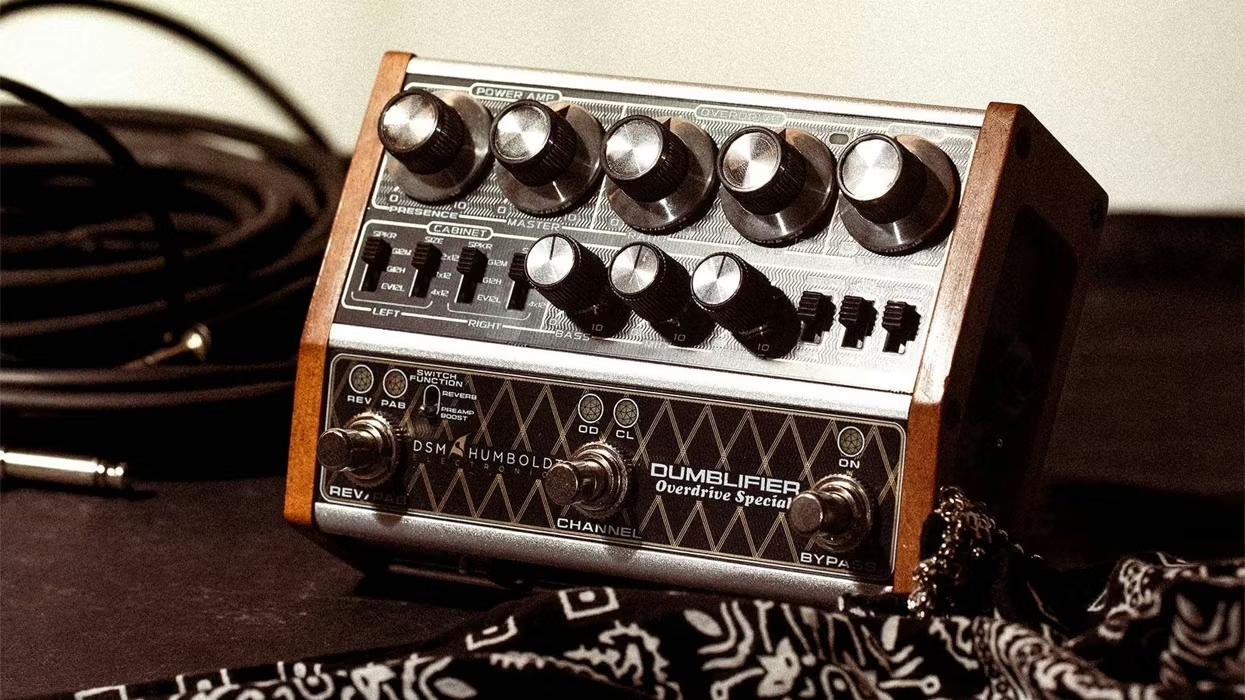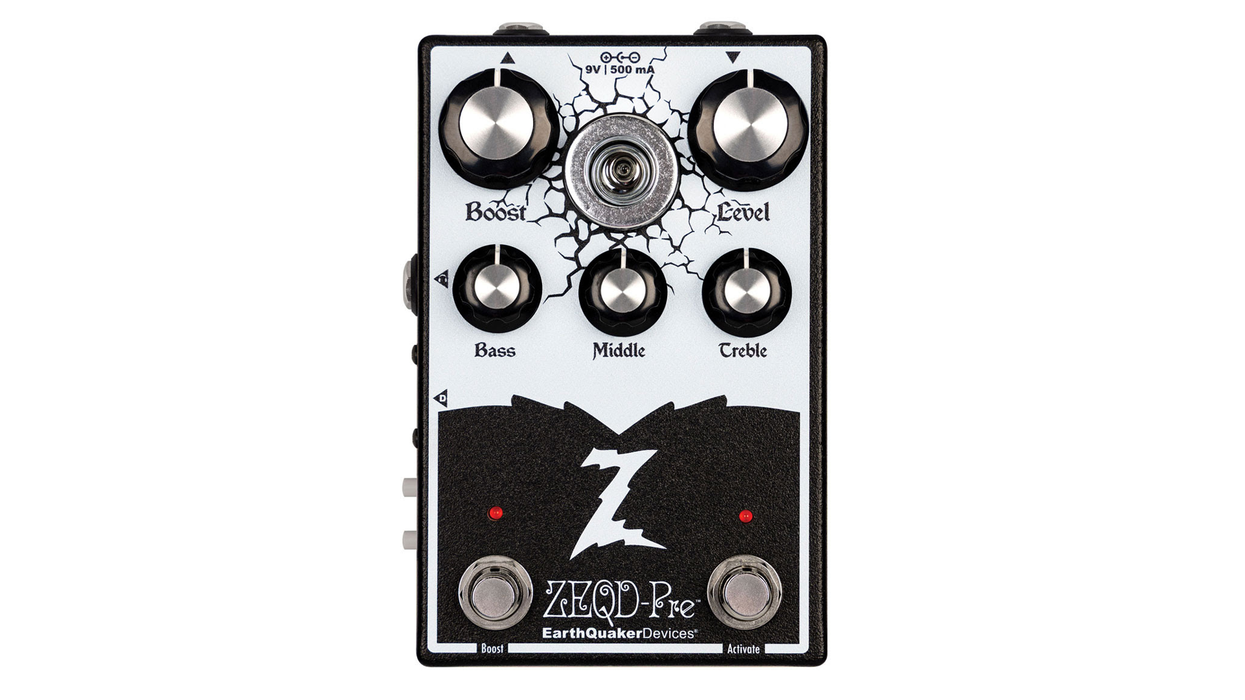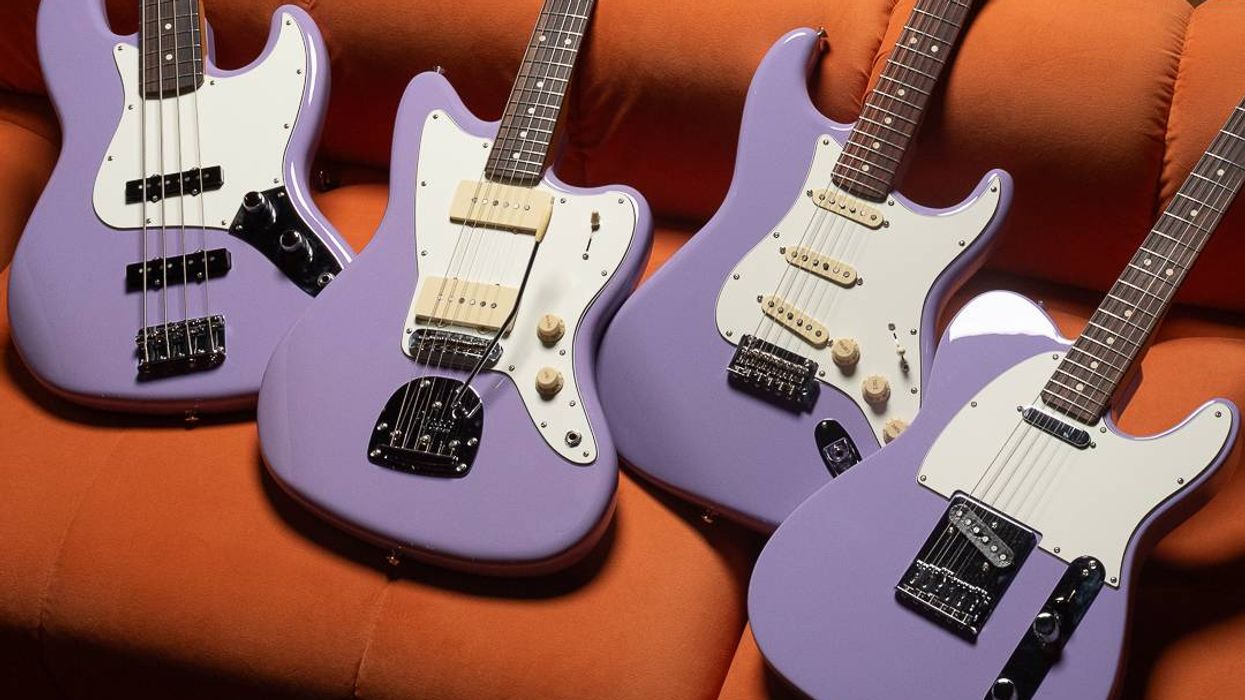| Want to print it? Download Hi-Res PDF |
We also want to talk a little bit about intervals. The distance between any two notes describes the interval. For example, from C to E is a major third because there are four half steps between the notes. All the examples below deal with thirds, both major and minor (which is three half steps). The key to any bending lick is playing in tune. In the first six examples, I have notated how to play the licks as double stops without the bends. Make sure when you bend, you go directly to the note. This will take some practice, but will make your bends sound totally pro.
Fig. 1 is an example of how to bend a major double stop up a half step. I place my pinky finger on the high note of the interval and the ring finger on top. Lead with the pinky finger, the third will follow and you'll have a better chance of bending in tune. Listen closely to the fretted example and match the pitch.
Download example audio...
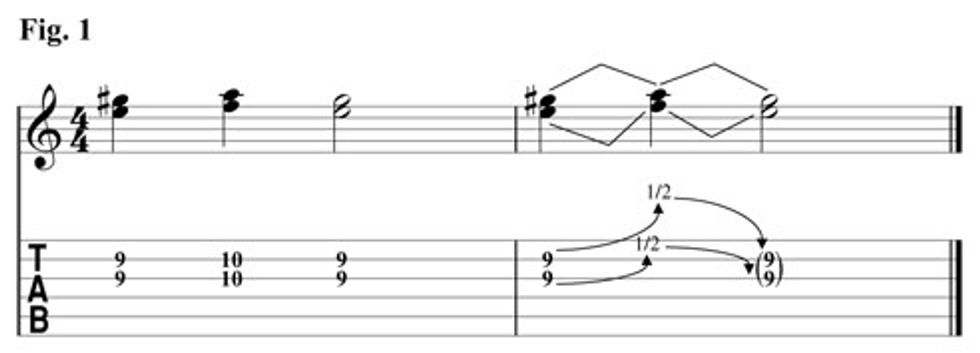
Fig. 2 is a bit tricker. Here were are bending two strings different distances. The second string is bent up a half step while the third string is bent up a whole step. Use the same fingering as Fig. 1.
Download example audio...
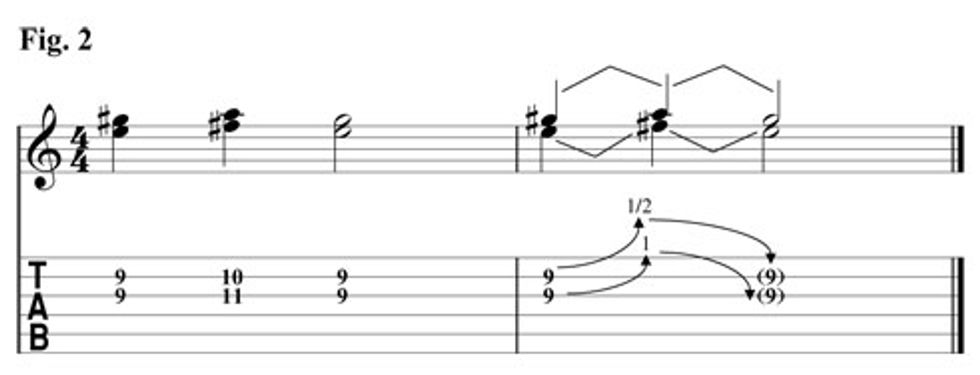
Fig. 3 works great in the key of A. Here, we are taking a minor double stop and bending it up a half step to make it a major double stop.
Download example audio...
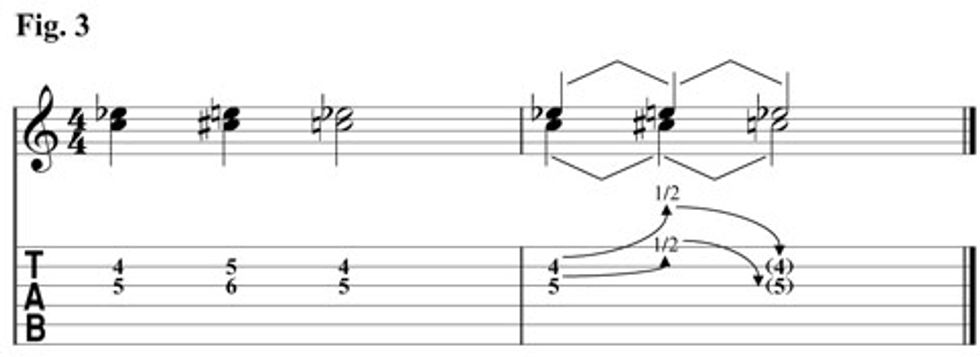
Fig. 4 is a major double stop lick in the key of E.
Download example audio...
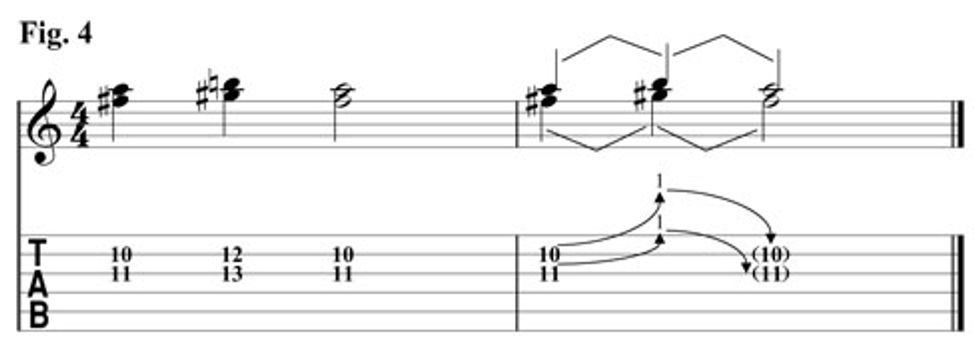
We move back to the key of A for Fig. 5. Try different fret-hand finger combinations for this example. Depending on the context of the lick, a few different options could work.
Download example audio...
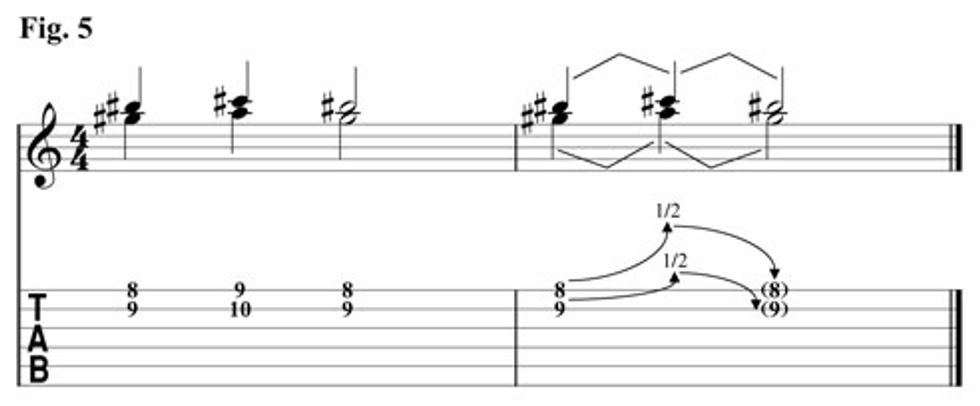
Finally, we look at Fig. 6. Here we are bending a minor double stop up a half step.
Download example audio...
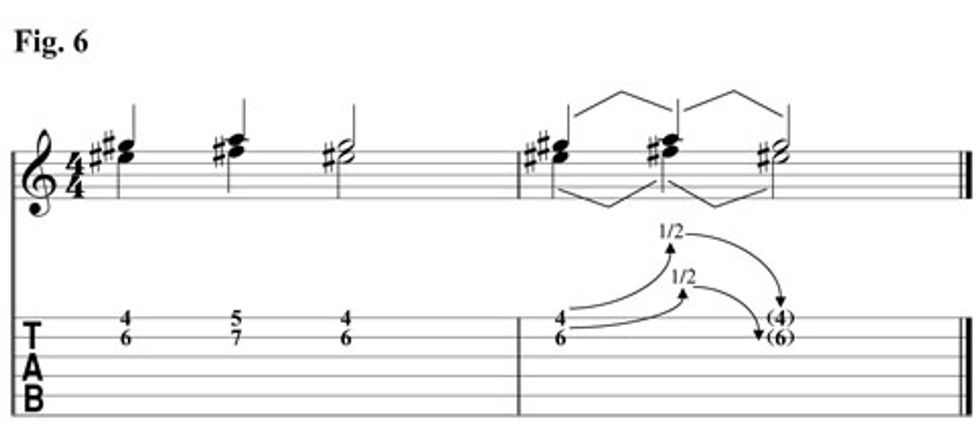
Once you feel comfortable with all the different bends (both major and minor) on a few different string groups, dive into Fig. 7, which combines all these techniques. The first four measures combine both major and minor double stops for a cool descending lick in E. In the fifth measure, you want to make sure you hold the major double stop bend while you hit the A on the first string to complete the triad. Same goes for the bend in the next measure.
In the ninth measure, we want to hold the G# on the second string while bending the D up to an E to create a major double stop. By bending the b7 up to the root, you can give that dominant to major sound some more juice. In the twelfth measure, we use a pre-bend. This is when you bend the notes up, then strike them creating a cool descending slide sound. Obviously, this can take some practice; so make sure to get some reps in before your honky-tonk gig this weekend. Over the turnaround in the last four measure, we use combine a few pre-bends with some muted chicken pickin'.
Download example audio...
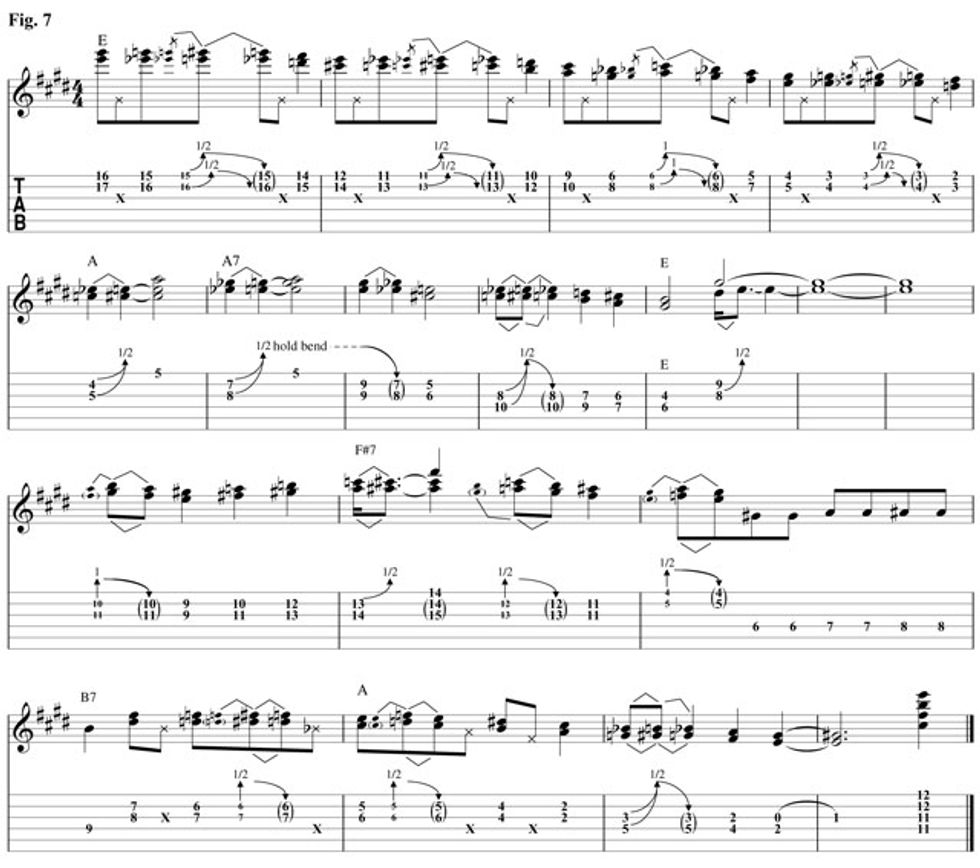
 Jason Loughlin has performed with Amos Lee, Rachael Yamagata, James Burton, Mike Viola, Nellie Mckay, Phil Roy, Marshall Crenshaw, Sara Bareillies, Lesley Gore, Ben Arnold and John Francis to name a few. Jason lives in Williamsburg, Brooklyn performing and teaching. Look out for his new record, Peach Crate, due out in February. For other info be sure to check his website jasonloughlin.com
Jason Loughlin has performed with Amos Lee, Rachael Yamagata, James Burton, Mike Viola, Nellie Mckay, Phil Roy, Marshall Crenshaw, Sara Bareillies, Lesley Gore, Ben Arnold and John Francis to name a few. Jason lives in Williamsburg, Brooklyn performing and teaching. Look out for his new record, Peach Crate, due out in February. For other info be sure to check his website jasonloughlin.com





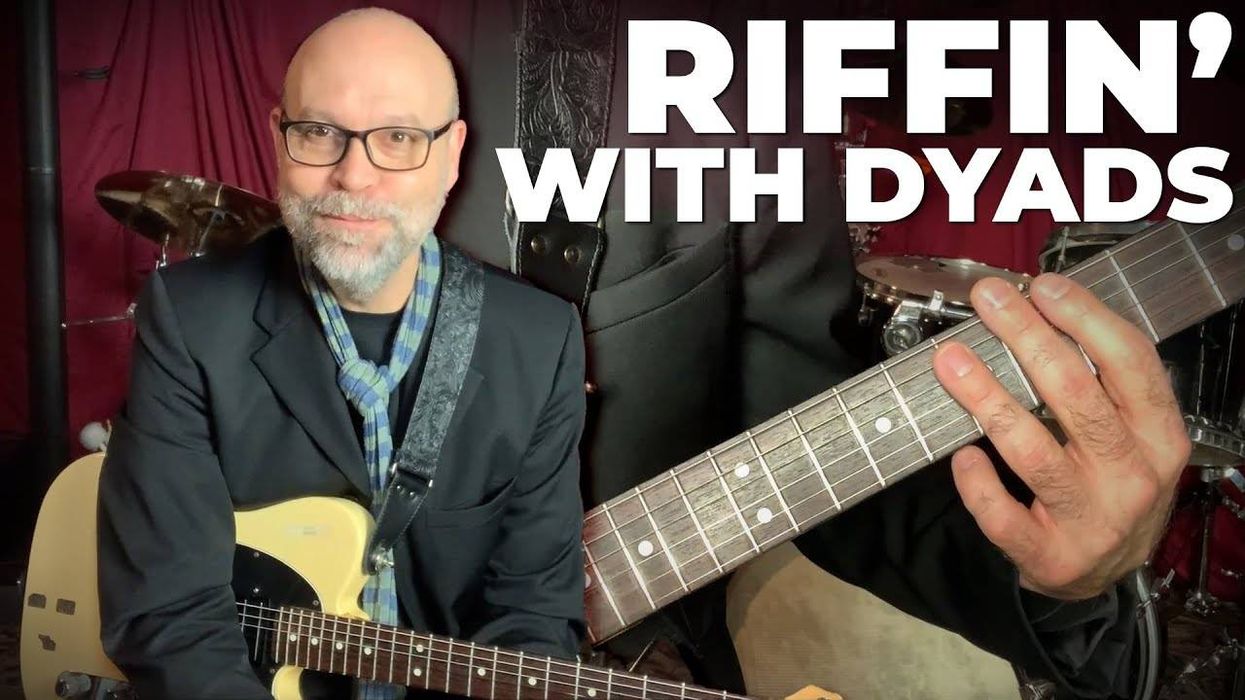
![Rig Rundown: John 5 [2026]](https://www.premierguitar.com/media-library/youtube.jpg?id=62681883&width=1245&height=700&quality=70&coordinates=0%2C45%2C0%2C45)
